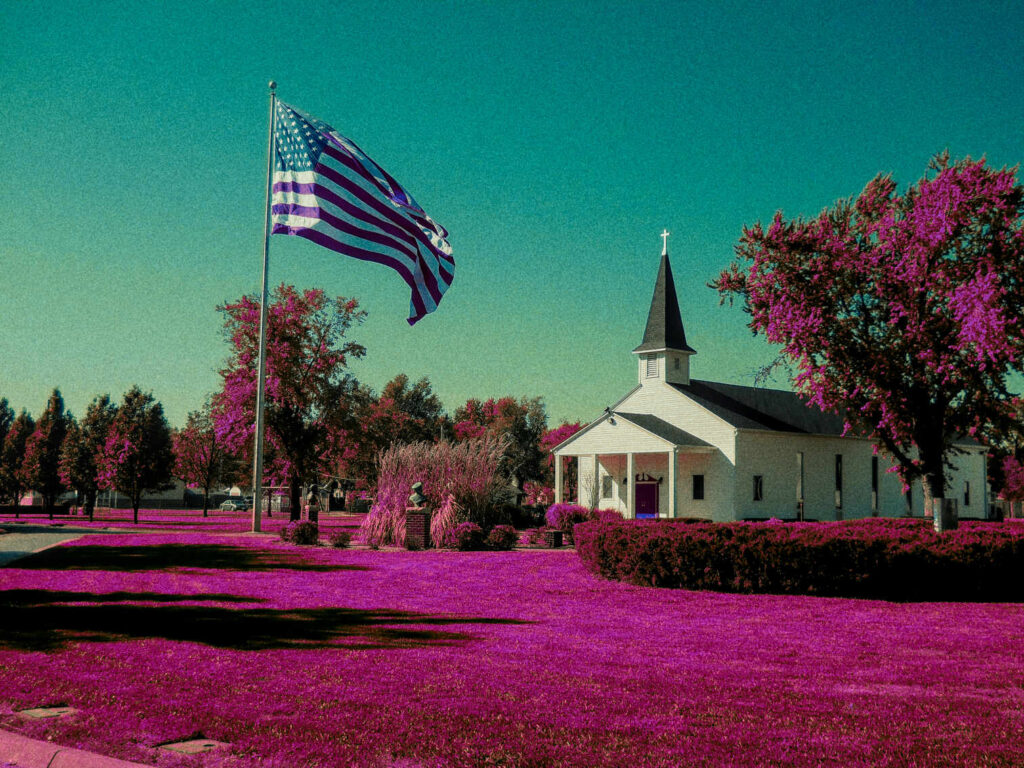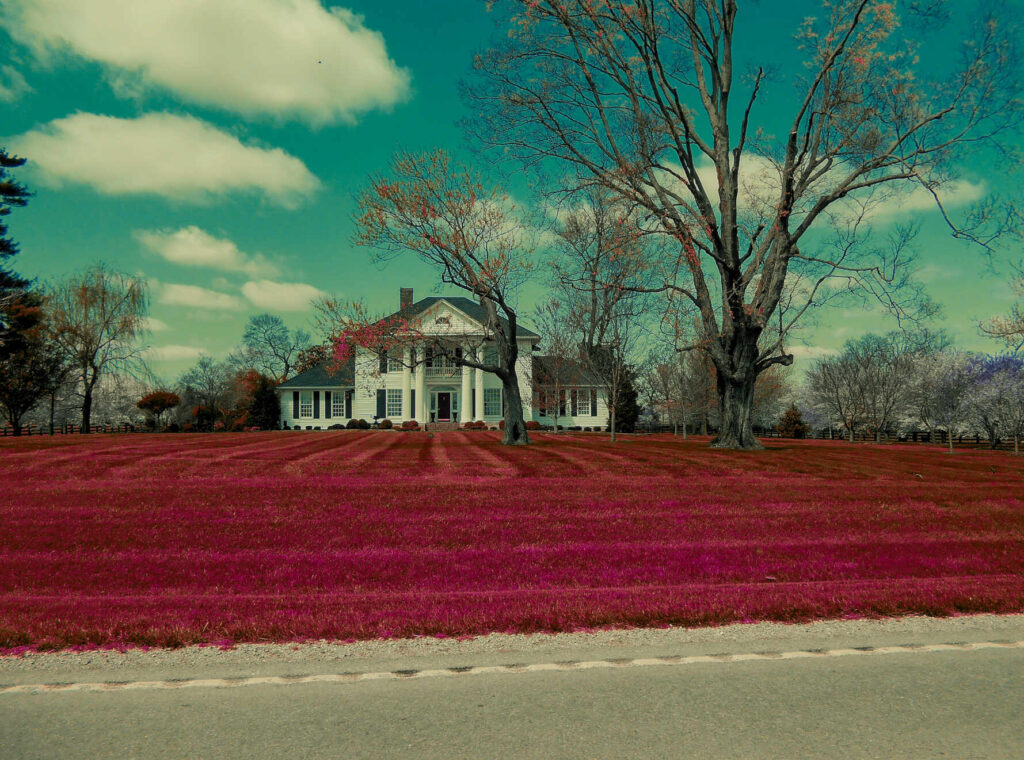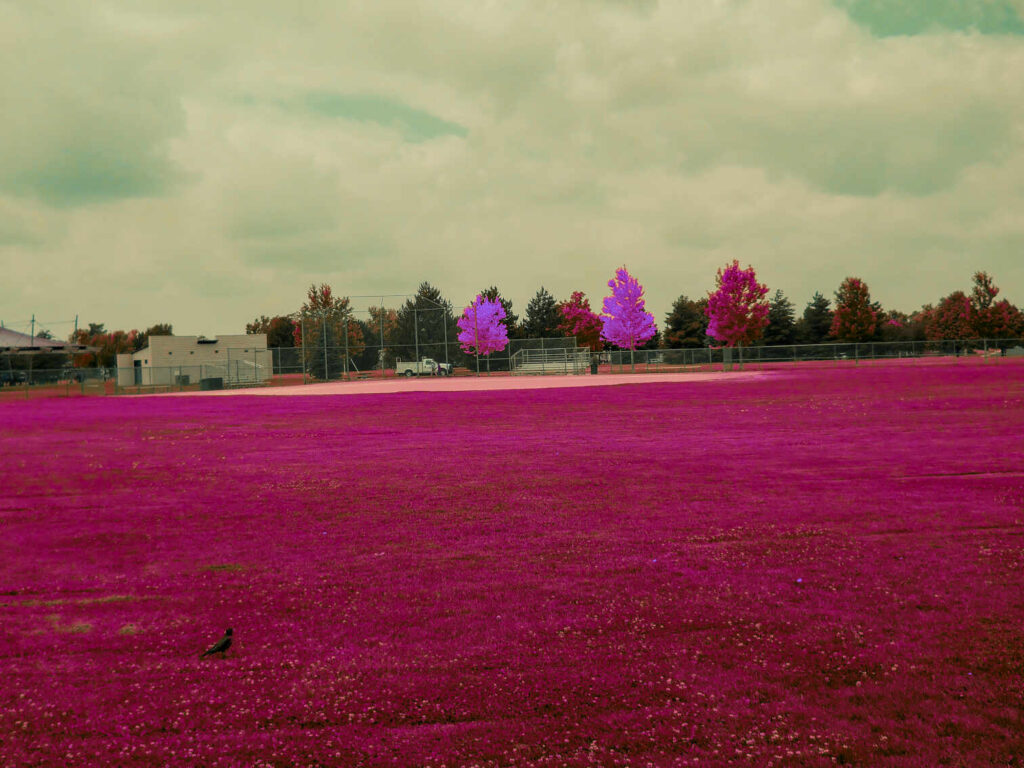


Infrared Photography
Infrared photography is the process of making photographic impressions on a medium that is sensitive to infrared light. Human visual perception lies in the range of 400 – 700 nanometer wavelength. Infrared light is beyond human perception in the 700 nanometer to 1 millimeter wave length. When we take infrared photographs it gives us a glimpse into what it might be like to experience more of the visual spectrum. Infrared photographs give a sense of other worldly radiance. Today I would like to talk about a specific type of infrared film, Aerochrome 1443.
Aerochrome
Aerochrome has an interesting history. It is a film from a line of IR films developed for aviation surveillance. Aerochrome is photosensitive to visible light as well as IR light up to 900 nanometers. Aerochrome was used on early spy planes. Photos taken with this film reflect IR light from foliage as a brilliant bubblegum pink. The pink canopy makes everything else in a landscape stand out in contrast. In the 1960’s the film became available to the greater public. Moreover, it quickly became a subject of interest in popular photography and design thanks to designers like Karl Ferris.
Eventually new technology deprecated the usefulness of still IR aerial photos and, avant-garde curiosity was not enough demand to keep Aerochrome available. Aerochrome was discontinued in 2009. Then in 2010 Richard Mosse used Aerochrome in a film The Enclave. Richard Mosse’s photos in the Congo may be the last substantial work to ever be shot in it’s style. Now the last prized Aerochrome film rolls live in collections, on the refrigerated shelves of dedicated film enthusiasts. Today a single roll of expired Aerochrome can sell for hundreds of dollars. Genuine Aerochrome is a perishing curiosity and a lost technology.
Simulation
The solution to the scarcity of Aerochrome for many curious photographers is to use a modified digital camera. Then digitally adjust the color channels of photos to simulate a false color infrared film. I’ve done the latter half of this process to come as close as possible to emulating IRFC photography without spending money on camera gear I might not use frequently. I developed a style for the Darktable photo editor which lightens green hues and moves them into a pink color space. This simulates the IR light that is reflected from chlorophyll in sunlight.